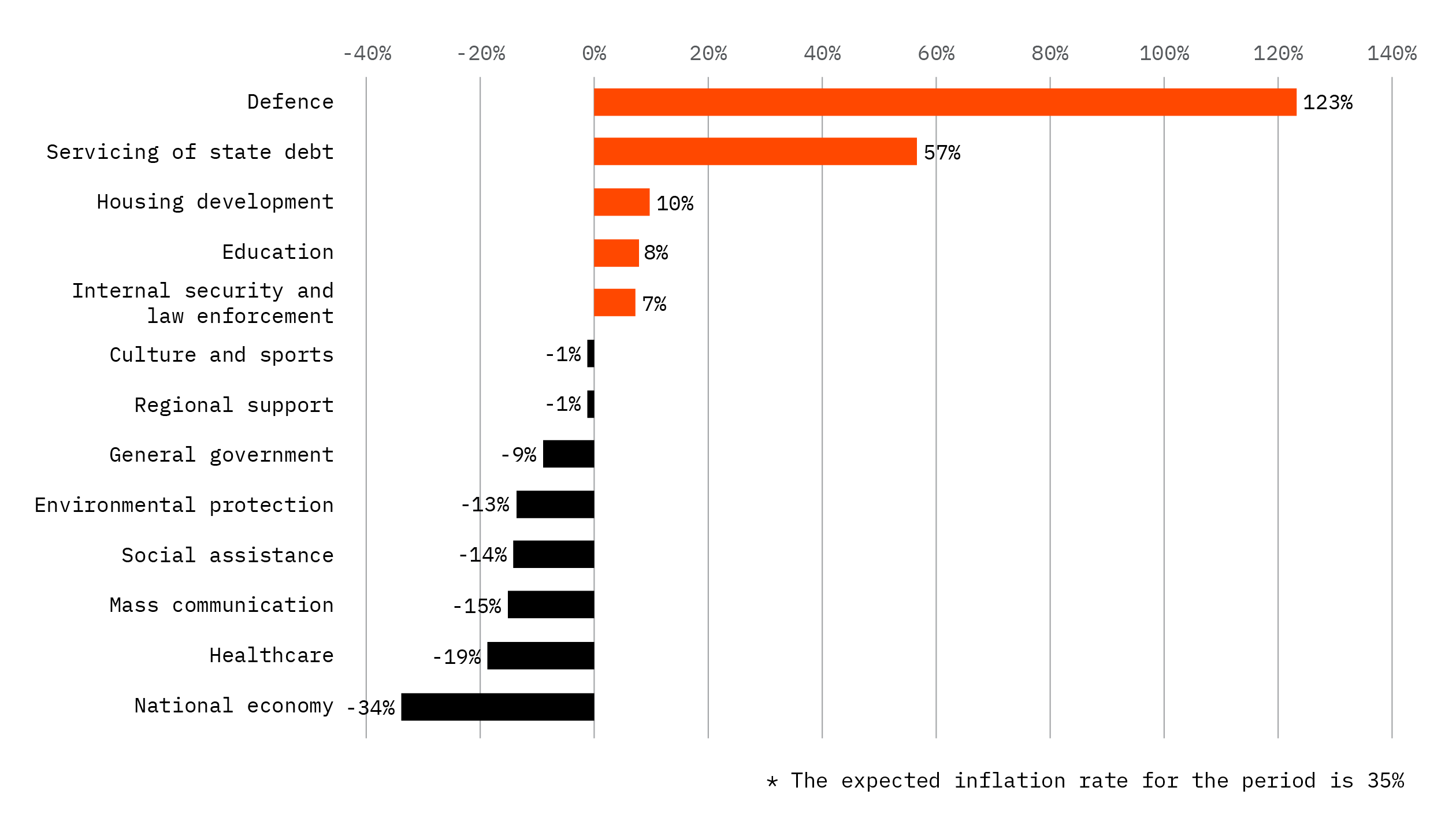2.1
Russian domestic politics
The protracted war of attrition in Ukraine is the key driver of Russia's internal political dynamics. This conflict, enduring in intensity, increasingly aggravates domestic political strains, adding to the burden on Putin’s regime. The regime continues to rely primarily on its repressive machinery to manage the situation.
There is an ongoing militarisation of Russian society across all levels, with Putin’s regime progressively revealing a more totalitarian character. On the one hand, this will lead to a consolidation of power under the tight control of a select group; on the other hand, societal tensions will heighten.
Looking ahead to 2024, the most likely scenario is the continuation of the current regime, albeit in a climate of escalating internal tensions.
As February 2024 marks the second anniversary of Russia’s invasion of Ukraine, Russia finds itself grappling not with a rapid conquest but with a protracted and draining conflict. This enduring military engagement presents an additional burden for the regime, not only militarily but also in terms of domestic politics.
The ongoing conflict leads to substantially higher defence expenditures, inevitably impacting national budget priorities. Despite Putin’s assurances in his 2023 programmatic address to the Federal Assembly, claiming that the military needs would not be met at the expense of public welfare, the reality proves otherwise. The 2024 budget envisages defence spending to exceed 10 trillion roubles, roughly 6% of Russia’s GDP.
This increase propels military expenses to the forefront as the largest budget item for the first time in Putin’s tenure, pushing previously dominant social expenditures to a secondary role. Meanwhile, allocations for education and healthcare remain stagnant compared to the previous year, effectively decreasing in real terms due to inflation. Furthermore, the revenue projections for the 2024 budget are highly optimistic, forecasting 35 trillion roubles, almost 10 trillion more than in the last pre-war year, 2021. Such forecasts are unlikely to materialise, leading to budget cuts, mostly in areas other than military spending. Inflation, expected to persist in 2024, will increasingly impact the average Russian citizen in particular.

Change in real (inflation-adjusted*) budget expenditures for 2024 compared with 2021.
At the same time, the escalating war costs have become an increasing burden for Russia’s regions, obliged to divert funds from their budgets for equipping new military units, paying recruitment bonuses, organising territorial defence, and supporting families of those killed in Ukraine. As regional budget planning typically does not cover expenditure on such measures, this necessitates budget cuts in other areas, leading to a general decline in living standards. By mid-2023, regional debt had grown by 9% to 3.027 trillion roubles, according to the Russian finance ministry. To address the increasing regional discontent, the central government must find additional federal funds to cover their deficits, a challenge that is becoming more difficult.
War fatigue is deepening, and this trend is likely to continue.
Beyond the drain on material resources, the prolonged military conflict, without any significant achievements that could be leveraged for propaganda purposes, is also inflicting moral fatigue on society. War fatigue is deepening, and this trend is likely to continue. Most Russians don’t feel a patriotic fervour towards the war; the prevalent sentiment is weariness, coupled with a desire to minimise the war’s direct impact on themselves personally and those close to them. Meanwhile, the growing number of Russian casualties and those suffering permanent health damage makes concealing the war’s human cost from the public gradually more challenging.
The longer the conflict continues at its current intensity, the more the resulting internal political tensions will deepen. However, as 2024 unfolds, the regime will likely retain sufficient means to maintain control throughout the year. The repressive apparatus remains its primary management tool, with an expected increase in the use of repressive measures and a growing role for security agencies. This situation inhibits the emergence of political forces opposing the Kremlin, and in the short term, it’s unlikely that anyone from the current Russian elite will directly challenge President Putin.
Looking ahead to 2024, the most likely scenario is the continuation of the current regime, albeit in a climate of escalating internal tensions.
Looking ahead to 2024, the most likely scenario is the continuation of the current regime, albeit in a climate of escalating internal tensions. The ongoing militarisation of Russian society at all levels and the regime’s increasingly totalitarian nature cause both consolidation of power under the tight control of a select group and exacerbation of societal tensions. Internal pressures may escalate to a point that threatens the regime’s stability in the coming year, primarily if certain conditions materialise. The first of these conditions is a more rapid and drastic deterioration of the economic situation than anticipated, which would significantly impact a broader segment of the population or a particularly responsive subset of society. Another potential trigger for serious internal tensions with broader societal resonance could be a significant military failure. The likelihood of either of these potential internal crises occurring is low at present, but the regime lacks the resources to withstand mounting tensions indefinitely.